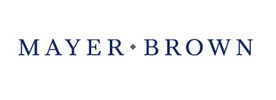Key Findings:
A complete market research report, including forecasts and market estimates, technologies analysis and developments at innovative firms within the Advertising & Branding Industry. Gain vital insights that can help shape strategy for business development, product development and investments.
Key Features:
Additional Key Features Include:
Industry Glossary
Industry Contacts list, including Professional Societies and Industry Associations
Profiles of industry-leading companies
Key Questions Answered Include:
-
How is the industry evolving?
-
How is the industry being shaped by new technologies?
-
How is demand growing in emerging markets and mature economies?
-
What is the size of the market now and in the future?
-
What are the financial results of the leading companies?
-
What are the names and titles of top executives?
-
What are the top companies and what are their revenues?
This feature-rich report covers competitive intelligence, market research and business analysis—everything you need to know about the Advertising & Branding Industry.
Plunkett Research Provides Unique Analysis of the Following Major Trends Affecting the Advertising & Branding Industry
-
Introduction to the Advertising and Branding Industry
-
Agencies Face Both Evolving Client Needs and Vast Changes in Media
-
OpenAI (ChatGPT), StabilityAI, Anthropic (Claude) and Others Launch Impressive Tools that Generate Text, Art, Code and Smart ChatBots
-
Digital & Search Advertising Soar/Amazon Becomes an Advertising Media Giant
-
Programmatic Ad Buying Dominates the Digital Media Market
-
Global Internet Market Tops 5.40 Billion Users/Ultrafast Broadband Expands, both Fixed and Wireless
-
Television Ads Evolve to Face New Challenges, Formats and Online Competitors
-
DVR Market Evolves/Time-Shifting Hurts Advertisers
-
Embedded Advertising/Product Placement/Branded Entertainment and Marketing Soar
-
Social Media Rakes in Global Online and Ad Revenues
-
Email Reigns as One of the Single Most Effective Advertising Tools
-
Newspapers and Magazines Rely on Digital Editions and Apps
-
Billboards Go Digital
-
Location-Based Services (LBS) Enhance Smartphones and Mobile Advertising
-
Private Label Brands Grow in Share of Total Store Sales
-
LOHAS-Socially Conscious Consumers Create Challenges and Opportunities for Advertisers and Marketers
-
Growth in China’s Ad Market
-
Growth in Big Data Supported by Expansion of Cloud Computing and Predictive Analytics
-
Retail Technologies and Artificial Intelligence (AI) Advance for Store Checkout and Restaurant Orders
-
Online Marketing, Social Media and Ecommerce Enable Startups/Disruption in Consumer Products and Cosmetics
-
Regulatory Environment Is Challenging for Online Businesses & Social Media
Plunkett Research Provides In-Depth Tables for the Following Advertising & Branding Industry Statistics
-
Advertising & Branding Industry Statistics and Market Size Overview
-
Estimated U.S. Advertising Sector Revenues by NAICS Code: 2015-2022
-
Advertising Agencies, Public Relations Agencies & Direct Mail Advertising: Estimated Sources of Revenue & Expenses, U.S.: 2017-2022
-
Employment in Advertising & Related Industries, U.S.: January of 1990-2024
-
Internet Publishing & Broadcasting & Web Search Portals: Estimated Revenue & Expenses, U.S.: 2017-2022
-
Newspaper Publishers: Estimated Sources of Revenue & Expenses, U.S.: 2017-2022
-
Periodical Publishers: Estimated Sources of Revenue & Expenses, U.S.: 2017-2022
-
Radio Networks & Radio Stations: Estimated Sources of Revenue & Expenses, U.S.: 2017-2022
-
Television Broadcasting: Estimated Sources of Revenue & Expenses, U.S.: 2017-2022
-
Cable & Other Subscription Programming: Estimated Sources of Revenue & Expenses, U.S.: 2017-2022



















